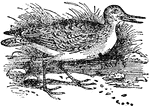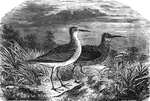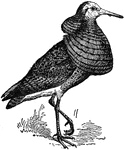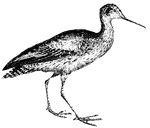Clipart tagged: ‘sandpiper’

Sandpiper
An extensive group of wading birds of the snipe family. They are found in large numbers in swampy regions,…
!["The broad-billed sandpiper.. [is] six and a half inches long, variegated above with black, rufous, and gray; beneath grayish-white, tinged with buffish-red; rare, but distributed throughout Europe." — Goodrich, 1859](https://etc.usf.edu/clipart/13000/13073/bblldsndpipr_13073_mth.gif)
Broad-Billed Sandpiper
"The broad-billed sandpiper.. [is] six and a half inches long, variegated above with black, rufous,…

Curlew Sandpipers
Averaging about eight inches in length, the curlew sandpiper can be found in Northern Europe, Asia,…

Fighting Sandpiper
"Sandpiper is a popular name for several wading birds."—(Charles Leonard-Stuart, 1911)

Turnstone
"Turnstone is a small genus of birds of the plover family, intermediate between the true plovers and…


